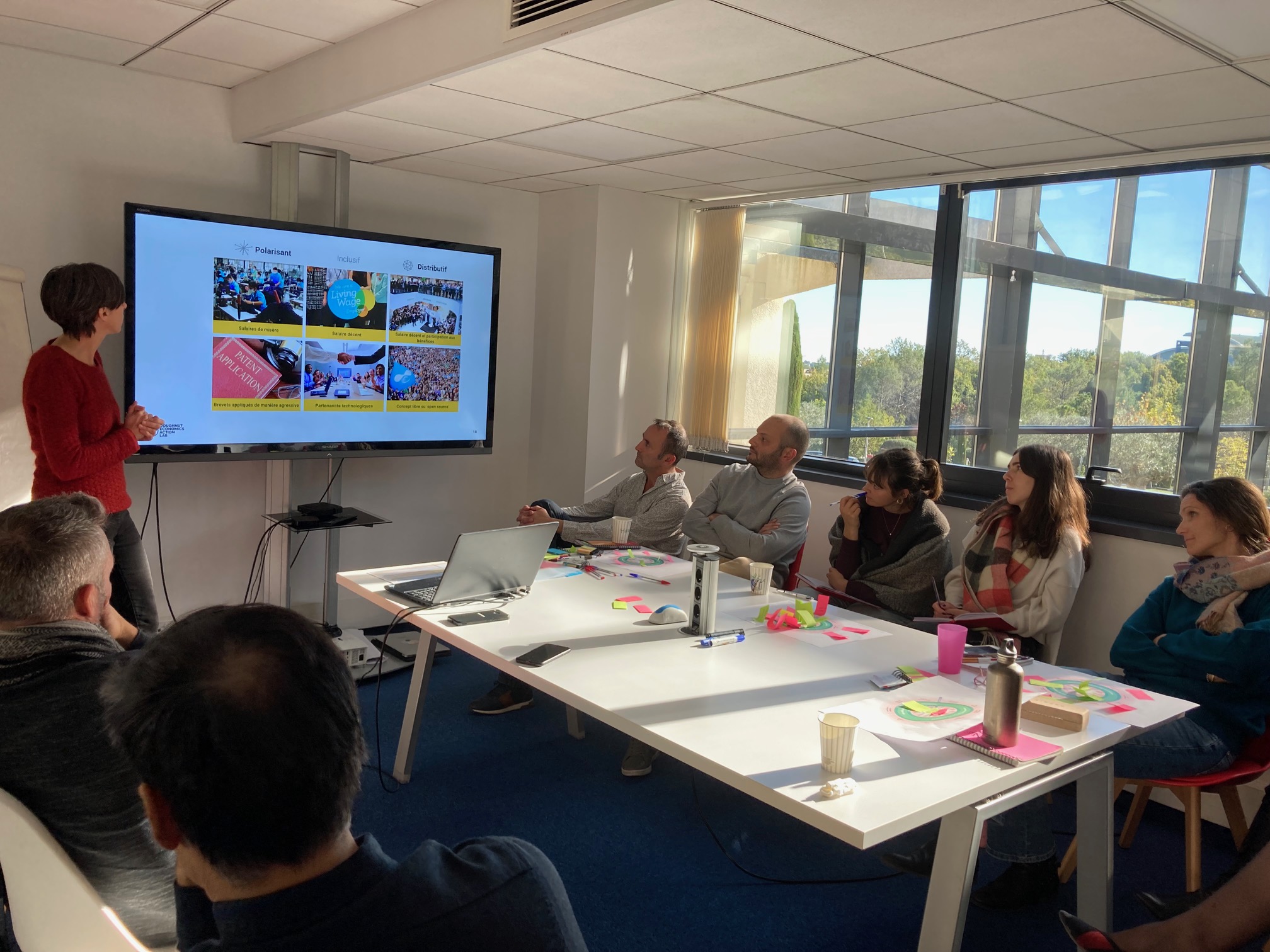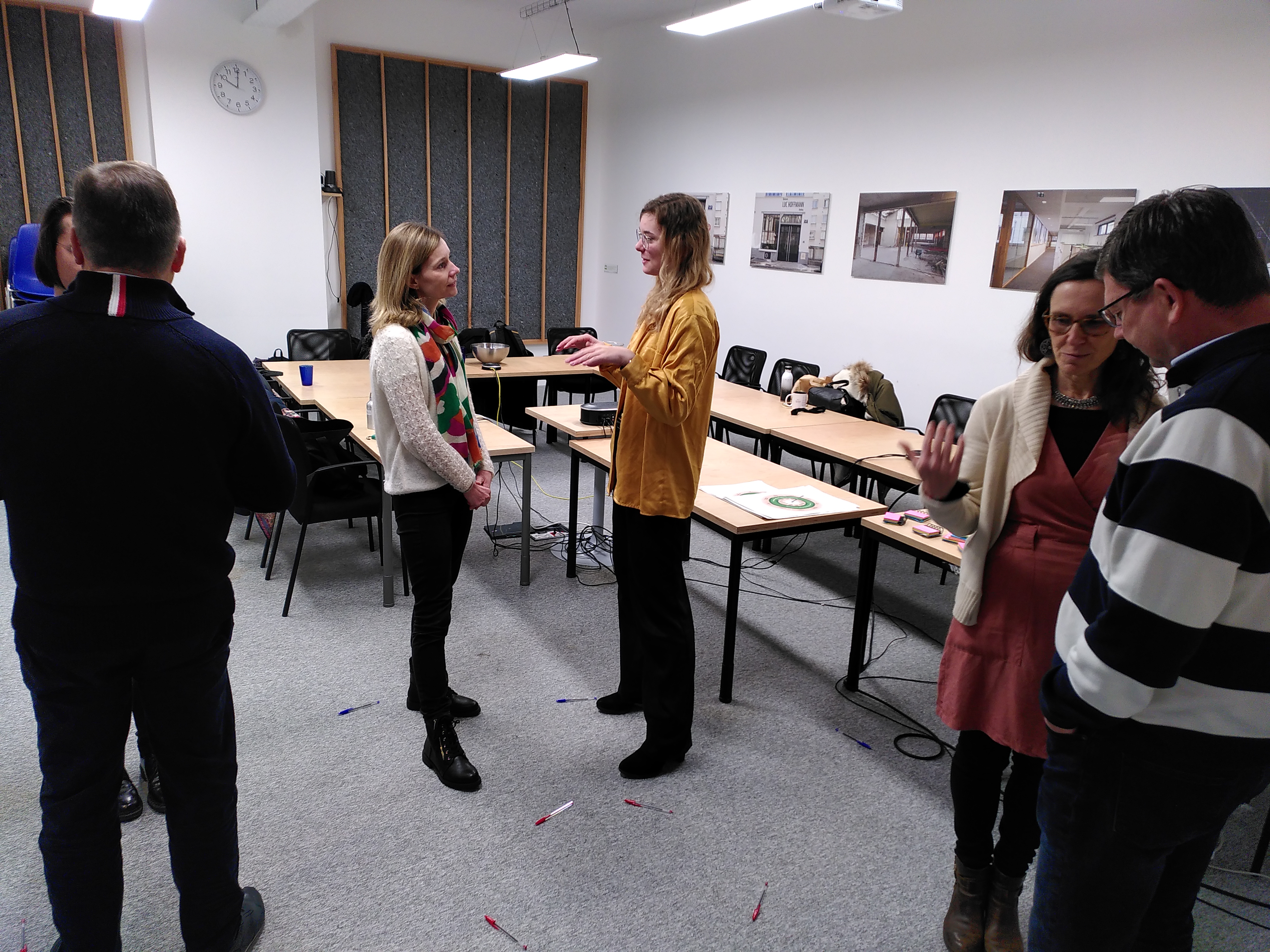
Business redesign for SMEs and a multinational
On how to address different challenges in one workshop

It was a cold winter day in Paris in beautiful facilities with three different companies. Since we had one full day together with only six participants (due to late cancellations), I thought it was going to be a comfortable facilitation with plenty of time to go deeper.
However, a challenge emerged quickly due to the different sizes of participants' businesses.
Looking back to last November, when we facilitated the same Doughnut Design for Business workshop during one full day with
One great output of this late workshop was knowledge sharing: more advanced leaders shared their experience with those who were starting their journey.
One challenge as a facilitator was to reframe the way the experience was shared during the ideation part. We helped more advanced leaders to step away from giving advice to move toward sharing other stakeholders' perspectives and viewpoints.

Different size of businesses have different needs
In January, we had a different setting in the room with two leaders of small businesses and their associates—both well advanced in regenerative practices and strategies—and representatives of a bigger company.
With this 1-day time frame, we took the time to start with the Step into Doughnut format as an icebreaker and to close with intellectual and emotional takeaways. Both the opening and ending have been perceived as fun and nice ways to interact with each other.

During the wrap-up, participants said they valued insights about Doughnut economics, interactions, and inspiration from each other. They also realised how easily some redesign could be done and have major impacts on their path to regeneration. For example, by building partnerships with local governments or industries to help build regional resilience.
On another note, the multinational representatives observed how differently they experimented with the workshop compared to SMEs:
- Rapid mapping is more challenging when you have several divisions with complex data.
- Executives may not have access to such data.
- They may also have a harder time expressing transformative ideas if they are new to regenerative and distributive ideas.
- Finally, they might need pieces of information related to the five layers prior to their participation in the workshop.
In a nutshell, considering the complexity of their businesses, multinational executives may lack the relevant information needed to redesigin their business.
How to make the most of the workshop for top executive participants
With one of the representatives, we brainstormed a few ideas to add more value for top executives. It includes actions to be taken before the workshop:
- Give access to summarised pieces of information relative to Doughnut economics and the five layers.
- Have them come with impact reports and other documents helpful for the rapid mapping part.
- Have them prepare a note on the current design, what has been experimented with, what succeeded, and what failed.
- Provide examples related to redesigns, innovative strategies, and new legal forms.
Even though the representatives in the room were not top executives, they do work with them on a daily basis and could share their insights based on their experience.
What I learned from this workshop and the previous ones:
- All participants could benefit even more if they had access to some content or additional sessions before the actual workshop.
- Follow-ups could also be great to measure and help with implementing actions.
- Having top executives and SMEs leaders in one room is a great way to share very different perspectives, but it might not be the most efficient way for executives to dive deep in the workshop.
What I'm curious about is: how does it go for practitioners who work with top executives? Do you share the same viewpoint? Have you mixed different sizes of company in one room? And how could it benefit the participants to have more than just the workshop itself?
I'm continuing my investigations with different types of participants; next time I'll facilitate the workshop for a network of CSR directors :)
.png)



